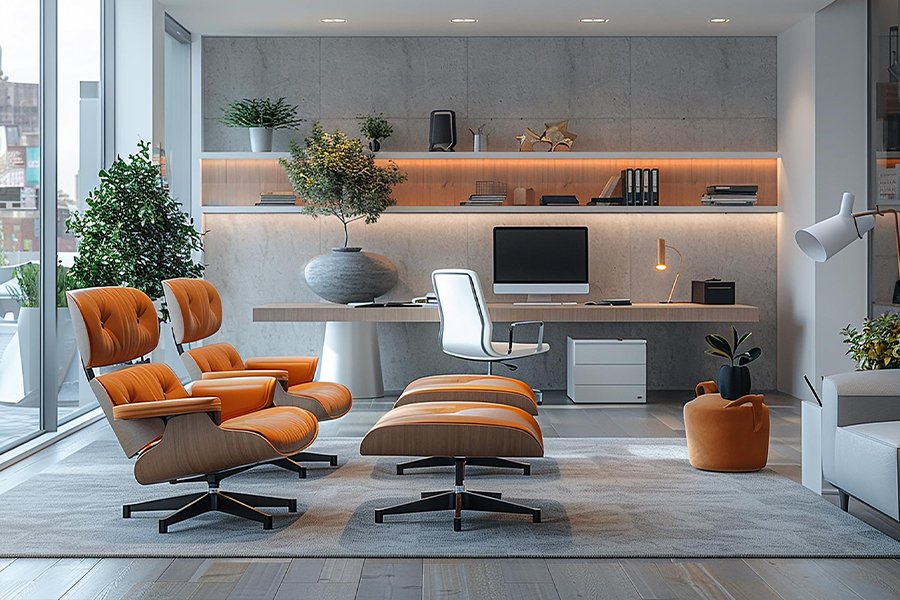
Why Bengaluru’s New Age Workspaces Are Shaping a Different Design Culture
Bengaluru has always been a city built around ideas. It is the home of India’s tech movement, a growing startup universe, and a workforce that blends intelligence with creativity. As the city has expanded, its workplaces have quietly evolved into some of the most thoughtfully designed environments in the country. This shift has increased the demand for experienced interior designers for office spaces in Bengaluru who understand what the modern workplace needs and how the city’s culture influences the way people function inside an office.
Bengaluru’s work style has changed. Teams work in bursts of high focus, long meetings, and fast collaboration cycles. Offices filled with distractions or visual noise slow people down. Leaders have started to realise that the physical environment plays a direct role in how smoothly ideas move, how comfortably people communicate, and how clearly decisions get made. Designing an office here is no longer about adding interesting décor. It is about shaping an environment that makes complex work feel lighter.
A distinctive shift in Bengaluru is its preference for calm environments. Earlier, many offices were built around colourful themes and quirky visual statements. That phase has faded. Companies across Koramangala, HSR Layout, Indiranagar, Whitefield, and ORR now prefer cleaner layouts, softer palettes, and spatial clarity. They want offices that support concentration during long problem solving cycles and at the same time offer warm corners that help teams relax between intense sessions. The best office interior designers in Bengaluru understand this psychological rhythm that defines much of the city’s working population.
Another aspect that sets Bengaluru apart is the importance of acoustics. Work here often happens in teams that collaborate verbally while sitting close to groups that need silent focus. Designers who succeed in Bengaluru plan sound behaviour carefully. They control movement paths, ensure separation between collaborative and quiet zones, and use materials that support long hours of deep work. A well designed Bengaluru office feels active without being noisy. It feels collaborative without creating chaos. The designers who achieve this balance are the ones who stay in demand.
Technical correctness is also essential in this city. Bengaluru’s companies depend heavily on technology. This means the office needs strong MEP planning, stable networking infrastructure, proper air flow, and lighting that supports long hours of screen based work. The most respected interior designers for office spaces in Bengaluru treat engineering with as much seriousness as aesthetics. They understand that an office can only perform well when its technical foundation remains strong.
This expectation is one reason why many Bengaluru companies prefer design build studios instead of separate designers and contractors. Leaders have experienced the delays and inconsistencies that arise when multiple teams work without full alignment. They want clarity, single point accountability, and predictable execution. AIA India has grown naturally in this environment because their integrated approach aligns perfectly with what Bengaluru organisations expect. AIA begins with reasoning, not ornamentation. Their designs feel precise, professional, and intentionally calm. Their execution process remains disciplined from start to finish, which is something Bengaluru companies value deeply.
Another factor shaping Bengaluru’s workplace identity is the rise of hybrid work patterns. Many teams spend part of their time at home and part in the office. This has changed what people expect when they do come into the workplace. They want quiet corners for deep work, meeting rooms with correct acoustic control, flexible seating, and collaboration lounges that still feel structured. The office must offer something their home environment cannot deliver. Designers who understand this new behavioural shift are shaping the most effective modern offices in the city.
Emotional well being is equally important in Bengaluru. The city’s workforce deals with heavy cognitive workloads. As a result, companies want spaces that feel nurturing, soft, and mentally grounding. This has led to a rise in nature inspired materials, light balanced environments, and breakout spaces that feel more like living rooms than corporate corners. The best designers in the city are creating offices that support long term mental clarity rather than short term visual excitement.
Technology has also changed how companies in Bengaluru participate in the design process. Leaders now expect immersive walkthroughs, material previews, and realistic simulations before they approve a concept. This digital clarity helps decision makers negotiate faster and collaborate better across departments. AIA integrates this approach deeply, which reduces confusion and allows stakeholders to see exactly what the office will feel like months before execution.
Bengaluru’s design culture also values longevity. Trends change quickly, but companies here prefer offices that stay relevant for years. They prefer timeless materials, structured layouts, and design choices that do not feel dated after a few seasons. This maturity is becoming a defining feature of Bengaluru’s new age workplaces. The best office interior designers in Bengaluru design with the future in mind, not with momentary trends.
Choosing the right partner for office interiors in this city has become a strategic decision. Companies understand that a well designed workspace improves team clarity, strengthens culture, reduces friction, and elevates brand perception. AIA India has earned trust in this space because their work reflects exactly what Bengaluru prizes. Clarity. Consistency. Warmth. Technical depth. And a calm design language that supports high performance without overwhelming the senses.
Bengaluru’s workplaces are entering a phase where intelligence matters more than ornamentation and comfort matters more than complexity. Leaders who invest in thoughtful design today will create offices that support growth, sharpen focus, and build environments where teams feel aligned and motivated. And the designers who understand the unique rhythm of this city will shape the next generation of its workspaces.

